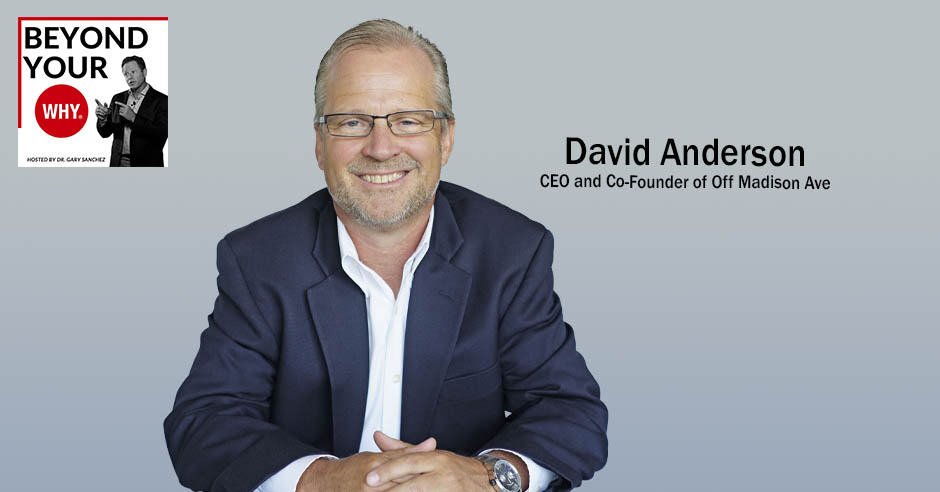
David Anderson was bullied as a kid mainly because of his height, pushing him to keep a low profile. Despite this, he chose to defy other people’s perspectives and look for a better way to live. With enough hard work and perseverance, he found his way to the White House and started a full-service agency focusing on behavioral marketing. He joins Dr. Gary Sanchez to discuss how he finds better ways to influence people in approaching a brand, product, or service. David also explains how marketing strategies are being simplified to cope with the fast-paced digital world, particularly with the rise of artificial intelligence.
—
Watch the episode here
Listen to the podcast here
The WHY of Better Behavioral Marketing Strategies With David Anderson
Welcome to Beyond Your WHY show, where we go beyond just talking about your why, and helping you discover and then live your why. Every week, we talk about one of the nine whys. We bring on somebody with that why so you can see how their why has played out in their life. In this episode, we’re talking about the why of better way or to find a better way and share it. If this is your why, you are the ultimate innovator. You are constantly seeking better ways to do everything. You find yourself wanting to improve virtually anything by finding a way to make it better. You also desire to share your improvements with the world.
You constantly ask yourself questions like, “What if we tried this differently? What if we did this another way? How can we make this better?” You contribute to the world with better processes and systems while operating under the motto, “I’m often pleased but never satisfied.” You are excellent at associating, which means you are adept at taking ideas or systems from one industry or discipline and applying them to another, always with the ultimate goal of improving something.
I’ve got a great guest for you. His name is David Anderson. David is at the forefront of entrepreneurship, board leadership, and visionary growth. That’s where you will find him. He’s a strategic growth driver, problem solver, synergist, mentor, and quality visionary. His passion for launching, transforming, and scaling a business in challenging economic and crisis situations are evident from the moment you meet him.
David has garnered comprehensive international business experience via working in the White House and serving in several blended roles at Entrepreneurs’ Organization or EO. During his global experience, he has communicated and built strong relationships with leaders from all over the world. He’s the CEO and Co-Founder of Off Madison Ave, an advertising and marketing company.
David seamlessly navigated business survival challenges during the 2007 to 2008 crisis, 9/11, and the death of a partner with intellectual honesty, strategic influence, and deep fiscal stewardship, growing business by 20%-plus in 2021 with consistent year-over-year improvement. At Off Madison Ave, David expertly guided customer behavior by generating big ideas, and constantly perfecting the marketing mix across multiple channels. He identified lucrative market opportunities, inspired a passion for the brand, and drove customer acquisition and retention. David, welcome to the show.
Thank you very much, Gary. I need a copy of that. I sound good there. Who wrote that? I wish I could say so many nice things about myself.
It was impressive. It was very long. We’re going to get to unpack it and dive into that a little bit. Where are you now? Where do you live right now?
I am sitting here in Tempe, Arizona, right by the ASU campus where I also went to school. As we were talking a little while ago, it’s a frigid 61 degrees in Arizona, which for us is brutal. The rest of the US is laughing at us.
No sympathy at all. From most people, you’re going to get none. I was up in Denver during the holidays. It was -14, windshield is -27, so 61 is not frigid.
We’re spoiled rotten here.
Take us back to your life. Where did you grow up? Where did you go to high school? What were you like in high school?
For all the old people on here, I’ll give you the Reader’s Digest version. They know what that means. I was born in Arizona but I lived here for only a couple of years. Interestingly enough, me being an entrepreneur almost my entire life, and my dad was a total corporate guy. He got transferred back to Manhattan. We lived in New Jersey, but all of our family was here in Arizona, so I spent a lot of time here.
I came back and went to ASU. It took me more than four years. We won’t go into how many years or my GPA. After that, I needed a change and ended up back in Washington DC for a little over four years. Those are some of the most fantastic learning and fun times of my life, and then back here in Arizona in the early ’90s where I went to work for somebody for a short time. I started my serious entrepreneurial ventures which I’ve been in for 25-plus years now.
David’s why is to find a better way and share it. How he does that is by challenging the status quo and thinking differently. What he ultimately brings are simple solutions to help others move forward. David, back to high school real quick. What were you like in high school? What was it like hanging out with you?
To translate how you explained a better way, we drive people crazy because we’re never happy with anything. We’re always like, “What if? How about we do this? How about we do that?” To be totally honest with you, I wasn’t like that in high school. I have evolved. I was more fly under the radar. Most people from high school probably wouldn’t even remember who I was.
In a lot of ways, it was, “What could I do to get by? I was taught by my dad who started work in a Fortune 25 company in their warehouse and became a senior vice president. I learned the value of a hard work ethic all through high school work and college work. While I am the smartest tool in the shed, I will outwork anybody. I work harder and do that.
I had the absolute privilege of working for two presidents of the United States. For political reasons, I won’t get into them at this point because of the state of politics now, but I learned some valuable lessons. One of the biggest was the importance of the people you have around you. You’re only as good as the people that you have around you.
[bctt tweet=”You are only as good as the people you have around you.” username=”whyinstitute”]
I worked in the Executive Office of the President. I got an up-close view of some of the most amazing people you will ever meet, politics aside and all that. I learned a lot. I learned about people who had that why and that vision thing of what it was going for. That’s where my transformation started. I was pretty young when I did that. I was in my mid-twenties. I wish I would’ve paid a lot more attention to the learnings that I’ve had. I was a late bloomer. I didn’t get all of this until later on in life.
Let’s talk about this fly under the radar thing. Why were you a fly under the radar? I would love to hear your perspective. How tall were you in high school?
I am not a tall guy. I’m 5’5 or 5’6 on a good day. Two boys in their twenties both tower over me. I was bullied a bit as a kid too. I changed schools when I was in fourth grade. It was a pretty brutal experience. I talk about that now. Being shorter and being bullied, I know that all had an effect on me being my real self at a younger age.
I had no idea because I can’t tell on a screen how tall anybody is. The reason I mentioned that is because I had a similar experience. I grew late. I grew up mostly after high school. I know that experience of looking younger than everybody. How that can maybe keep you more in your shell, until finally you get out and realize, “I’m just as good, if not better than everybody else here. Let’s go rock and roll.”
In high school, you’re judged in a different way. I am an average athlete at best. In high school, that means a lot. I wasn’t part of the cool crowd and all of that. Life has a lot to do with who you associate yourself with, going back to what I said before of what I learned. It was simpler to keep a low profile.
Otherwise, you get picked on. Off to ASU. What were college years like for you? When you got to college, how old did you look?
I don’t look young anymore. Luckily, everybody can’t see me on screen. Most definitely, if you stand me next to some of the football players with full beards, 6’3” 200 pounds. I looked young going through college. College is where I started seeing some of my potentials. I wrote a book and some other things now. I joined a fraternity and I became president of my fraternity. My journey is from being the president of my fraternity to working in the White House type of thing. I started learning that I had a voice. Don’t let external factors and people judge you. You control your own destiny. It was during that college time that I started and had opportunities for leadership positions. Honestly, people are pushing me into them, not me actively seeking them.

You had to find a better way as you went along to deal with what you were dealing with. Whether that was in your own head or anybody else’s head, you had to find a better way. You had to think differently. You were never going to be the 6’5” 250-pound guy. That wasn’t you.
No. I don’t know how much you’ve read or heard Brene Brown speak. Without a doubt, I was a victim of my own stories. The stories we tell ourselves are defining us. I was just fortunate enough to have some people in my life that pushed me and a lot of luck. I’m not going to fool anybody. I ended up working in the White House because I met a girl at a party one night who worked there.
She introduced me to some people there and took me under their wing. They pushed me to be what they saw in me, rather than what I thought of myself. My work ethic had me take advantage of that. Now, I try to do the same thing for people that work for me and others. My mentoring and my coaching are to help other people reach their full potential. My purpose and my why is to help people and companies thrive. That’s what I’m about and what my why is. A lot of that is a better way and helping people realize there are better ways.
You graduated from ASU. What was your degree in?
In Finance.
You never imagined you would go to the White House.
I took one Political Science class in college because I had to or it was an elective. Three years later, I am flying on Air Force One. I’m traveling around the world in the Executive Office of the President. It’s strange how life works, but that’s exactly what happened.
Take us into your very first day at the White House.
On the very first trip that I did my role, I was an elite advance person with the president. I would travel ahead of him and with him wherever he traveled, domestically or internationally. I would go somewhere between a week and three weeks ahead of them, depending. International was more. I never worked directly in the White House because I was always out on the road doing things.
On my very first trip, I had no idea whatsoever. It was close to DC. The next thing I know, I’m standing in a field waiting for Marine One to land, the steps come down, and I’m 20 feet from there. It was just striking, the person but also what it takes to get around, the amount of detail that goes into it, and the behind the scenes stuff. Everybody thinks it shows up on TV the way they see it. It’s always choreographed.
I’m struggling to put this together. You go from a fraternity president at ASU. Your first gig at the White House is working with the president. How the heck does that happen? Versus the other people that start at the bottom, cleaning the toilets or whatever they’re doing and have to work their way up, or working with a senator. You start with the president.
It was sheer luck. There was a stint working in a bar in between there. Just a little bit more background of how it happened. Right before that, I moved to Washington DC with no job whatsoever. It was just a place I wanted to go. I lived in a hotel for my first week until I found a place to live. I was working on Capitol Hill for a United States congressman. There are a couple of things that I did for a senator and a congressman. I had this introduction to DC. Once I was there, I met a person at a party one night who helped give me an opportunity to do the advanced thing in the White House.
You were there for a couple of years, and then decided it was time to get out of DC? How did that happen?
The president I was working for lost. I decided that I didn’t want to be a lifetime politics DC person. It was an incredible adventure for four years, but it was time to go home and figure out what to do there. On my way driving back to Arizona, a friend I worked with in DC called me and said, “I have a PR firm here in Washington DC, but I’m from Arizona. Someday, I might want to live back in Arizona. Would you want to open an office for me in Arizona?”
I didn’t even know what a PR agency was. I got home a couple of days. I went to the ASU bookstore. I remember this clearly. It wasn’t all digital back then. I looked up books, PR 101, 102, and 305. I literally sat on the ground in the bookstore for probably three hours reading through all these textbooks. After a while, I was like, “I’ve been doing PR. PR is politics.”
I’ve been doing it and so I said, “Sure. Let’s get started.” Gordon C. James Public Relations. He’s a good friend of mine. I just talked to him. He’s an amazing guy who gave me a great chance. That’s how I ended up in marketing in PR. After a couple of years working with Gordon, I did a brief stint at another place, and then for a whole variety of reasons, I started Off Madison Ave with my business partner still to this day.
What is Off Madison Ave?
We are a full-service marketing agency with a real emphasis on behavioral marketing. It’s how you get people to change behaviors towards the better way mentality. Back in the older days, there was a saying by a very famous marketing person, “50% of my marketing dollars are wasted. I just don’t know which 50%.” Marketing has evolved. It can be very measured and very focused now.
Marketing is all about changing behaviors. It’s about building awareness and changing consumer behavior to try your brand. Brands are built by how the interaction with your brand is. Brands constantly have to look at a better way. What’s the stat? Thirty years ago, only 25 of the Fortune 250 are even still around, 25 years later. It’s some statistic like that. I butchered that. There is a significant history of brands that don’t keep up, don’t find a better way, and don’t change. They go out of business or get gobbled up by somebody much bigger because they’re not constantly looking for that better way.
Give us an example of what you mean by how to get people to change their behavior. What would be an example of something like that?
There’s BJ Fogg who wrote the book, Tiny Habits. BJ Fogg teaches at Stanford University and is also known as one of the gurus of behavioral marketing. It’s about the messaging and triggers. What motivates somebody to change a behavior? My wife doesn’t let me go to grocery stores because I come back with everything except what she sent me for.
How many people buy the exact same brand every time? “I get that milk. I buy that peanut butter. I always drink Coke, not Pepsi or nothing else.” What do you need to do to change people’s behavior to try a different brand? What is the stimulus that you need to give to get people to try something different and change their ways of doing it?
There is a science behind it. It goes to how you say things and what the motivations are. How do you learn from people’s behaviors with one brand, product, or service? How do you translate that into getting them to use a different brand or service? There’s science behind it and the steps that you take to get people to do that.
Would you be able to give us an example of how you’ve done something like that, or how a company has done something like that, getting people to change a behavior? What would be a product that you could think of that illustrates that?
You can see it a lot. There are some classic brands that do it a lot. The Nikes of the world. Even the Starbucks of the world. They entice you to order larger sizes of drinks that they have just by the points. Loyalty programs are great ways to get people to change their behaviors because you’re incentivizing them. You do so much of this. As of Tuesday, Starbucks added the number of stars for me to get another drink.
That’s a great way of doing it. A loyalty program is a great way to get people to change behaviors and go to places. We do a lot in travel and tourism. Through marketing, people who do the same thing every year can show similar activities that they do. Outdoor adventure people like to do outdoor adventures. What type of things do you message to them to get them to try something different? Does that make sense?
Yeah. Maybe even something as simple as when you go through a drive-through and they suggest with what you are ordering, “Would you like an apple fritter?” You never even were thinking about an apple fritter.
The significant increase in programs where you pay a flat monthly fee entices, “I paid one fee to this company.” My carwash, even though they’re a client of ours, Cobblestone. It’s $30 a month. I can go as often as I want, whenever I want. How many times am I going to go to a different place once I’m tied in there? They’ve locked in my behavior now too. By the way, I get points every time I do it that get me to free polishes and all of that kind of stuff that goes there.
How about Costco? People’s behavior is to go on Saturdays and Sundays to get snacks and food samples. Have you ever seen people go there to get samples? It’s ridiculous. People stand in line to have a little cup of three M&Ms to try to go there. It programs people, “We’ll do that.” You can even get a Coke and a slice of pizza for $1.49 at Costco. People take their whole families. It’s all the behaviors that build on to get that there.
I didn’t realize there was a science to it. I guess it makes sense that there would be, but you got to think it’s trial and error. If somebody gives it a shot and says, “It worked, it didn’t work.” There’s a whole lot behind it that we don’t even know.
With the continued growth of AI, it’s going to become more prevalent. It’s building digital personas for customers. We have another company called LighthousePE, which is a SaaS software product that embeds in any branded app that’s using location and other indicators. It’s all about building an individual’s behavioral patterns to send them the exact right messages at the right time to get them to take action.
Does AI excite you or scare you?
A little bit of both. Some of this is this chat thing where you put a few words in of what you want. I have one son still in college, and I had no idea how prevalent it was until he swears he doesn’t do it. I’m like, “Yeah, right.” Kids are writing their entire papers. “I need a 3-page paper, 1200 words on Roman Empire,” and it does it for you. It’s that kind of stuff.
I also saw a 60-minute story that professors are now like, “How do we make assignments that work around that?” The human mind will always find ways to work around AI. What does it mean for job growth in the future? I don’t know. There are a lot of unknowns as AI continues to be embedded in more parts of our lives.

It’s the same with me. I am excited but nervous about it. I’m scared of where this is going to take us. What’s the endgame here? Somebody was telling me that when the telephone came out, people were predicting the end of the world. It’s going to change everything. No one is going to have a conversation. Nobody is going to know each other anymore. They’re just going to do it over the phone. The end of the world is coming. Of course, it didn’t. The same thing is being predicted for this. Interestingly, I had an interview with a gal who’s an AI expert. We had this same conversation. You also have been participating quite heavily with EO.
Absolutely. If I could go back a little bit to what you said, I think you’re spot on. We will continue to learn, adapt, grow, and change. Right now, we are in a massive innovation change with the proliferation of social media. How are we handling that? Look what it’s done to our political environment. Look what it’s doing to creating good and bad around the world.
Just like when we went from the agricultural to the industrial revolution. There was a massive change. The growth of urban cities. We figured it out. Going to better way, I would say better way without thoughtful consideration for the ramifications of a better way can lead to a lot of challenges. That’s somewhere where people like me think, “Better way. Do it differently.”
My team here is the one saying, “Dave, that’s interesting but let’s think about the ramifications of that.” Play chess rather than a quick game of checkers. I think we can all do a better job. I’m a better way, but I need a significant counterbalance to that in my personal and professional life. I just wanted to add that in because I agree totally with you. Better ways sometimes get way out in front of themselves. It has led me to get myself in trouble more than a few times going on.
Entrepreneurs’ Organization is a fabulous organization. They have over 17,000 members now in 62 countries around the world. I had the privilege of not only serving on the global board of directors but also as the global chair up until July 1, 2022, when my term ended. Talk about a group of constant better ways. EO has almost 150 global staff around the world. Just think what those poor people go through with all of us better wayers.
There are a lot of people that won’t know what EO is. What is the purpose of EO? What has it meant to you? Why did you get involved with it?
It is the largest community of entrepreneurs in the world, so it’s having like-minded people. One of the core functions, but by no means the exclusive, is our CEO forums. They are founders entrepreneur forums of around 10 members within each chapter in almost 220 chapters around the world now. That’s where our brain trusts are.
There are boards of directors and boards of advisors. That’s where we go and talk about the best of things happening to us and the absolute worst of things happening not only in business but in our professional lives. You can’t separate the two, especially for entrepreneurs. We don’t get to drive home or walk downstairs now in this new world and switch on and off. It’s about supporting, prospering, and doing entrepreneurship in a way that changes the world.
I firmly believe that if we got rid of every politician in the world and put entrepreneurs in place for them, and there are some entrepreneurs in government, we work to solve problems and make it a better place and stop arguing with each other. We don’t have the luxury of sitting around and arguing forever. We have to get stuff done. We move forward. I believe entrepreneurs do this. I’ve been in situations where I’ve been at events with people from Pakistan and India sitting at the same table or from Israel and India. It’s an amazing network of people around the world that are working hard to make themselves better, but also the world better.
When I was speaking at the EO Arizona group, it felt like these are my people. These are the people that are out there doing stuff. They’re taking risks. They’re getting their butts kicked, and they’re kicking butt both. It was fun to see. It’s exciting. These are people that are excited about what they’re doing.
It’s also an extremely authentic group. I can meet an EO anywhere in the world and be like, “How is it going?” They’ll be totally honest, “I’m having the worst year ever right now. Not only is my business down, but I’m also getting a divorce. My son is challenged with mental health and drugs.” It comes from a place of instimacy or instantly being able to be intimate with other people about how life is.
There’s no fakeness. This is how it is. Ninety-nine percent of that time, that person will be like, “I’ve been there myself before. Let me help you. Let me introduce you to such and such. I know some people that might be able to help you.” I’ve met literally thousands of EO’s board members. I can count on one hand the people that I was like, “I would never want to hang out with this person.” It’s good people.
What was your position?
I was the global chair for the entire organization.
What does the global chair do?
Lots of things. It’s a corporate board. We have a CEO. We have 100-something staff members around the world. We have fiduciary responsibilities. The board and especially the chair and all board members were also worldwide ambassadors for the organization. Also, it was very common for places that I went to in other countries to meet with government officials or other significant entrepreneurs to help promote entrepreneurship in those communities.
My viewpoint and many others are if you look at the world, entrepreneurs are the vast majority who create jobs. We create jobs. We provide security to people. We are the backbone of the worldwide economy when you look at entrepreneurship and the number of people that they employ and where they are. It’s a passion of mine of spreading that entrepreneurship and also helps fellow entrepreneurs around the world.
[bctt tweet=”Entrepreneurs are the vast majority who create jobs around the world. They are the backbone of the worldwide economy.” username=”whyinstitute”]
I’m sure we have a favorite person in common, Warren Rustand.
Yes. I know Warren very well. He lives right here in Arizona, down south a bit in Tucson. I know Warren extremely well. He’s a fabulous leader and a person who also has given his all to help make entrepreneurs better around the world. He’s a very excellent gentleman.
I had him on the show a while back, and it’s one of my favorite interviews. It was interesting. I don’t know how he did this, but no matter what I asked him, he had an incredible answer. It was not a basic answer. I’d say, “What does it mean to be a good leader?” He said, “There are four things to that.” I’m like, “How would you know there are four things to what I was going to ask you?” It was so crazy.
Great, Gary. You just raised the bar for me significantly.
I’ll ask you the last question. What’s the best piece of advice you’ve ever been given or the best piece of advice you’ve ever given?
I said it earlier. Don’t let others define you. Never underestimate yourself. One of my favorite books is Grit by Angela Duckworth. What we do every day in our business life and personal lives requires an immense amount of grit. We’re going to have setbacks. If you don’t think you’re going to have setbacks, you’re delusional. It’s how you respond to them.
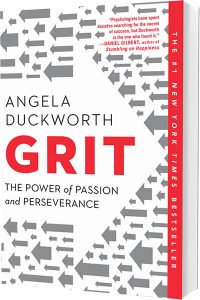
I have a 23-year-old and an almost 21-year-old. That’s what I tell them all the time. You know what? It’s life. You’re going to have setbacks. It’s how you respond to those setbacks and the grit that you show that will define you. Never let anybody else define you. Never give up. Just have grit because it’ll get you through the worst of times. The good times will come again.
I love it. David, if there’s somebody who wants to get a hold of you, wants to follow what you’re doing, and wants to look at your company, Off Madison Avenue. What’s the best way for someone to get in touch with you?
You could look at OffMadisonAve.com. I also have a personal website for some of the coaching that I do and the board of directors stuff that I do. It’s DWALeadership.com. My name’s David Wayne Anderson. The email is DWA@DWALeadership.com. You could go to the website or email me directly and learn a little bit more. I’m on LinkedIn. There are probably about 3.5 million David Andersons. It’s one of the most common names there is. You could find me, David Anderson, at Off Madison Ave or even in Phoenix, Arizona, you’ll find me.
One last thing before we end because we didn’t get to talk much about it. What kind of coaching do you do? Who would be an ideal client for you?
I work to help build high-performing teams. We all know that you can have the best strategy in the world, but if you don’t have a high-performing team to execute against it, your strategy will never get executed the way to get real results. I work with CEOs, but I also work with managers that have teams and how to make them better leaders.
[bctt tweet=”If you don’t have a high-performing team to execute your best strategy, it will never deliver real results.” username=”whyinstitute”]
I’m not complete yet, but I’m willing to also become a Marshall Goldsmith certified business coach. Marshall Goldsmith is the number one business coach, rankings many times over. My favorite book which falls exactly in line with the better way is What Got You Here Won’t Get You There. I’m a big believer in that. It takes a team. As I’ve told you early on, you can only do so much as an individual, it’s the team you build around you.
I love it. David, thank you so much for being here. I really enjoyed it. I look forward to staying in contact with you.
Sounds great. Thank you very much, Gary.
It’s time for the last segment, which is Guess Their Why. I thought what we would use is Patrick Mahomes. Patrick Mahomes is the quarterback for the Kansas City Chiefs. If you know anything about him, he’s the next coming of the best quarterback to be. He’s already surpassed so many of the best quarterbacks, including Tom Brady. He’s only been in the league for five years, but what he’s done in five years surpasses what anyone else has done in those five years. Does that mean he’s going to be the best of all time? No. Is he on that trajectory? Yes. What do you think his why is? If you know anything about him, I would love to know what you think.
I think his why is challenge. I think he does things differently. He doesn’t follow the rules. He doesn’t throw the ball like anybody else. He doesn’t play the game like anybody else. He thinks outside of the box. He sees a different world than all the other quarterbacks before him. He’s not stiff in the pocket and just throws a particular one pass. He’s all over the place in what he’s able to do and willing to try.
I believe that his why is to challenge the status quo. Let me know what you think. Thank you so much for tuning in. If you have not yet discovered your why, you can do so at WhyInstitute.com with the code PODCAST50. If you love the Beyond Your WHY show, please don’t forget to subscribe. Leave us a review and rating on whatever platform you are using. Thank you so much. I will see you in the next episode.
Important Links
- LinkedIn – David Anderson
- David Anderson
- Entrepreneurs’ Organization
- Off Madison Ave
- Tiny Habits
- LighthousePE
- Warren Rustand – previous episode
- Grit
- DWA@DWALeadership.com
- Marshall Goldsmith
- What Got You Here Won’t Get You There
About David Anderson
 Immediate Past Global Board Chair at Entrepreneurs Organization (EO), Chair LighthousePE Advisory board, & Many Non-Profit & Profit Organizations
Immediate Past Global Board Chair at Entrepreneurs Organization (EO), Chair LighthousePE Advisory board, & Many Non-Profit & Profit Organizations


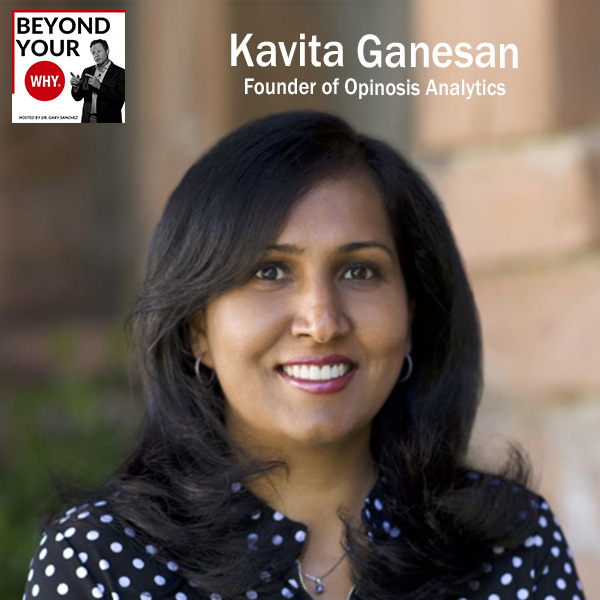
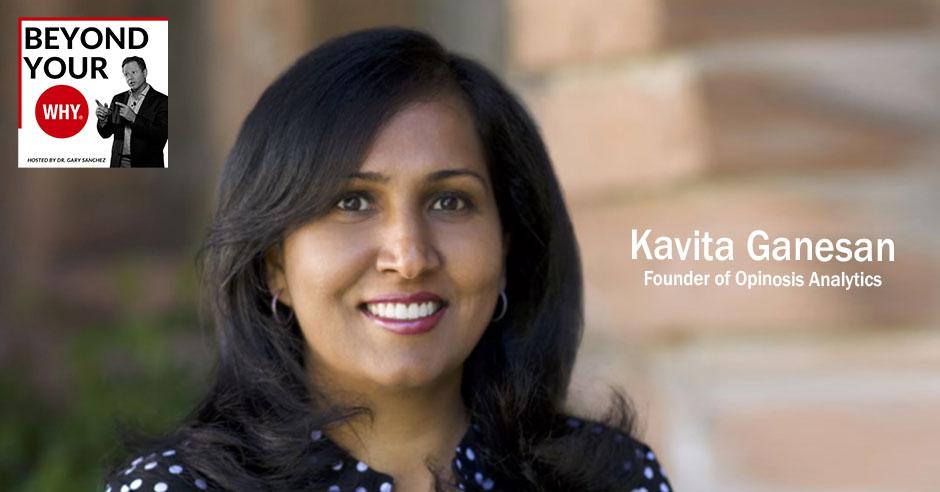
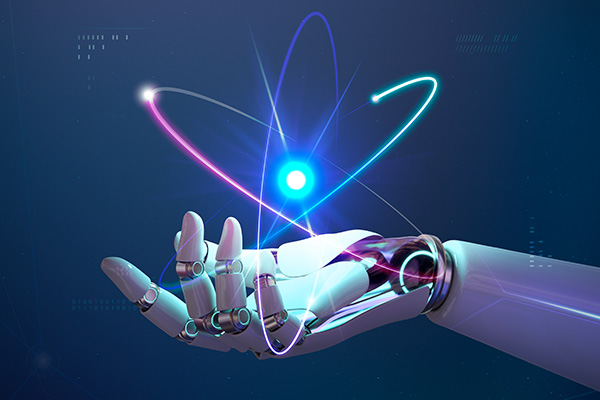
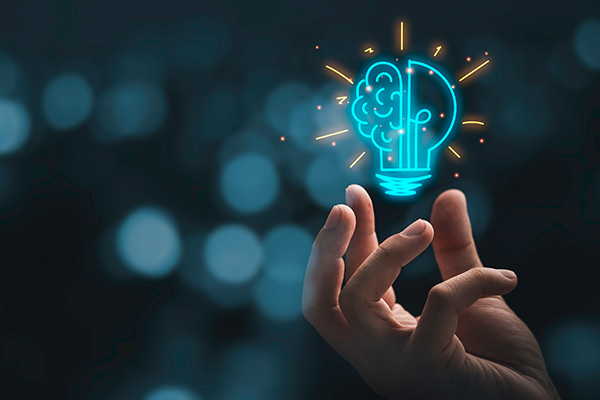
 With over 15+ years of experience managing and scaling AI initiatives at Fortune 500 companies such as 3M and Microsoft, as well as smaller businesses, I have developed strong expertise in helping organizations reach their automation goals. I’ve taken multiple AI projects from a fuzzy idea through planning and implementation, delivering meaningful outcomes for these organizations.
With over 15+ years of experience managing and scaling AI initiatives at Fortune 500 companies such as 3M and Microsoft, as well as smaller businesses, I have developed strong expertise in helping organizations reach their automation goals. I’ve taken multiple AI projects from a fuzzy idea through planning and implementation, delivering meaningful outcomes for these organizations.



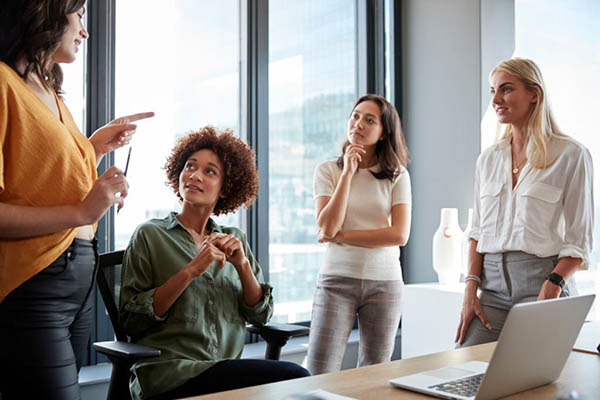
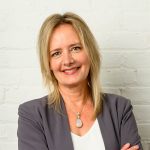 I help leaders dig into your own leadership potential, learn from other ground-breaking leaders, and gain the confidence to show up as the leader you want to be.
I help leaders dig into your own leadership potential, learn from other ground-breaking leaders, and gain the confidence to show up as the leader you want to be.




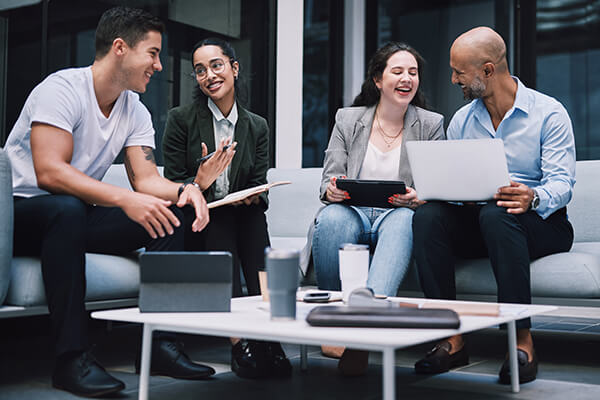
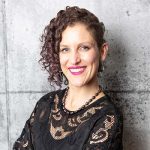 Dr. Angela Mulrooney is a global speaker, best-selling author, and personal branding expert. She works with thought leaders around the world to clarify their message through their brand archetype while using various media platforms (LinkedIn, podcasts, and the stage) to drive sales so these experts can change the world with what they know.
Dr. Angela Mulrooney is a global speaker, best-selling author, and personal branding expert. She works with thought leaders around the world to clarify their message through their brand archetype while using various media platforms (LinkedIn, podcasts, and the stage) to drive sales so these experts can change the world with what they know.




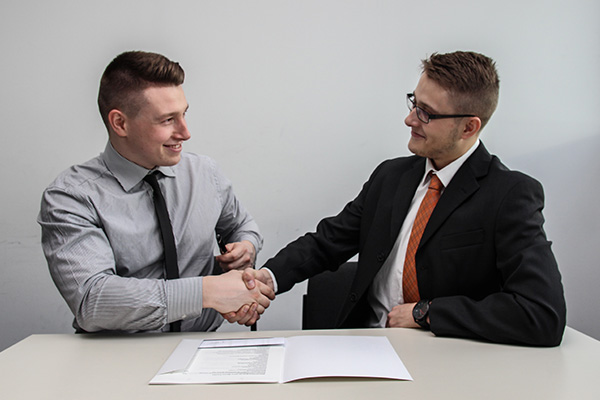
 Max has dedicated the last two decades of his life to providing the best hiring practices in leadership search and consulting. He graduated with a Bachelor’s Degree from Northern Arizona in Business Administration and was fortunate to start working immediately with with the Fortune 50 Recruiting firm Allegis Group / Aerotek.
Max has dedicated the last two decades of his life to providing the best hiring practices in leadership search and consulting. He graduated with a Bachelor’s Degree from Northern Arizona in Business Administration and was fortunate to start working immediately with with the Fortune 50 Recruiting firm Allegis Group / Aerotek.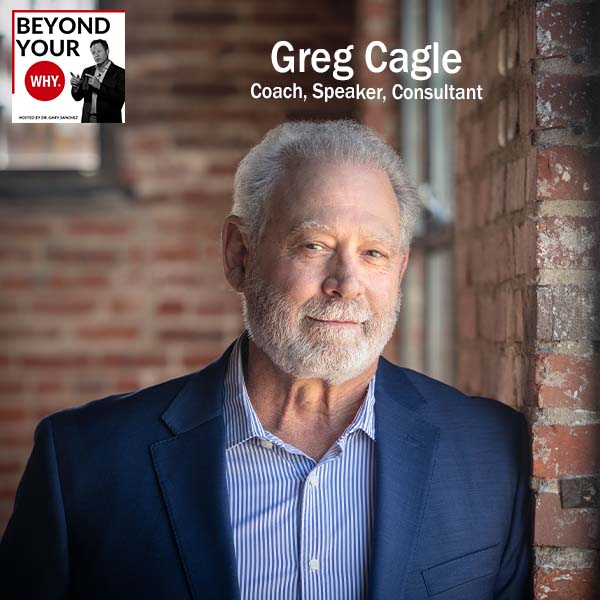
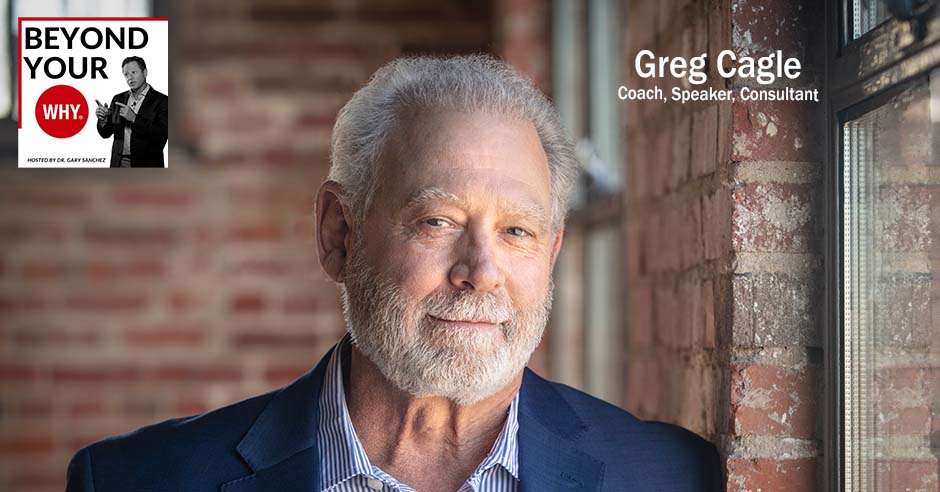


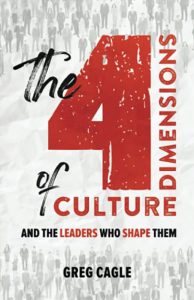
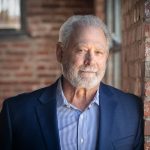 Greg Cagle is a passionate advocate for authenticity, a transformational executive coach, a corporate culture consultant, an author, and a speaker. Leveraging more than twenty-five years of in-the-trenches experience in building and leading his own companies, Greg comes alongside leaders and guides companies to position them for breakthrough success in building a culture that blows away the competition.
Greg Cagle is a passionate advocate for authenticity, a transformational executive coach, a corporate culture consultant, an author, and a speaker. Leveraging more than twenty-five years of in-the-trenches experience in building and leading his own companies, Greg comes alongside leaders and guides companies to position them for breakthrough success in building a culture that blows away the competition.
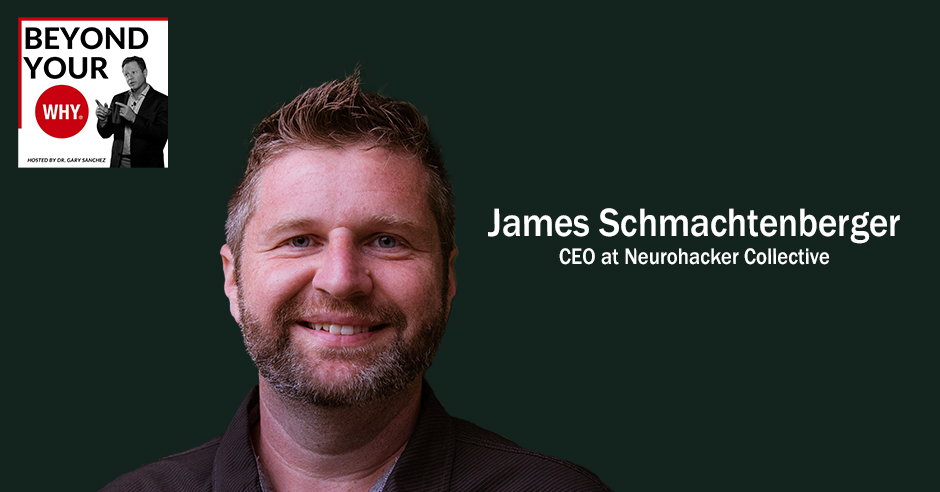
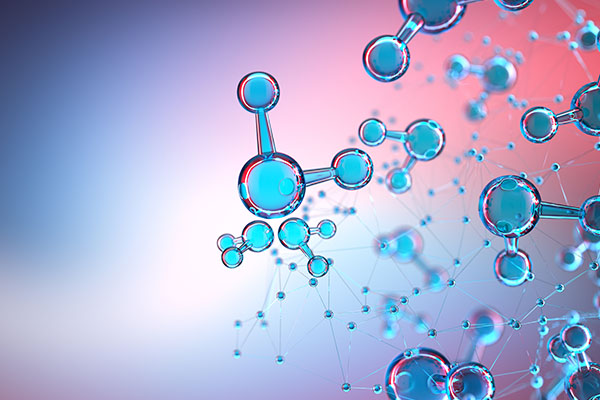



 James Schmachtenberger is a successful serial entrepreneur, with a lifelong focus on using business and innovation to effect large-scale change for the benefit of humanity. James is the co-founder and the CEO of Neurohacker Collective, a company focused on making groundbreaking products for health and well-being through complex systems science. His areas of expertise include nootropics, anti-aging and regenerative medicine, sleep and fast-paced entrepreneurialism.
James Schmachtenberger is a successful serial entrepreneur, with a lifelong focus on using business and innovation to effect large-scale change for the benefit of humanity. James is the co-founder and the CEO of Neurohacker Collective, a company focused on making groundbreaking products for health and well-being through complex systems science. His areas of expertise include nootropics, anti-aging and regenerative medicine, sleep and fast-paced entrepreneurialism.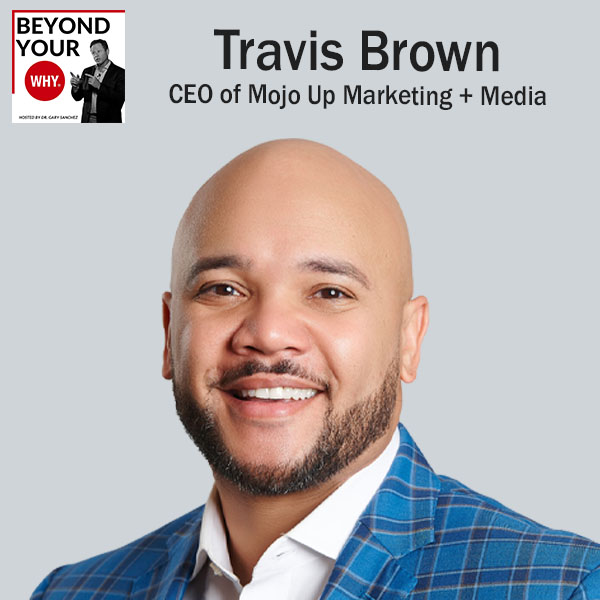
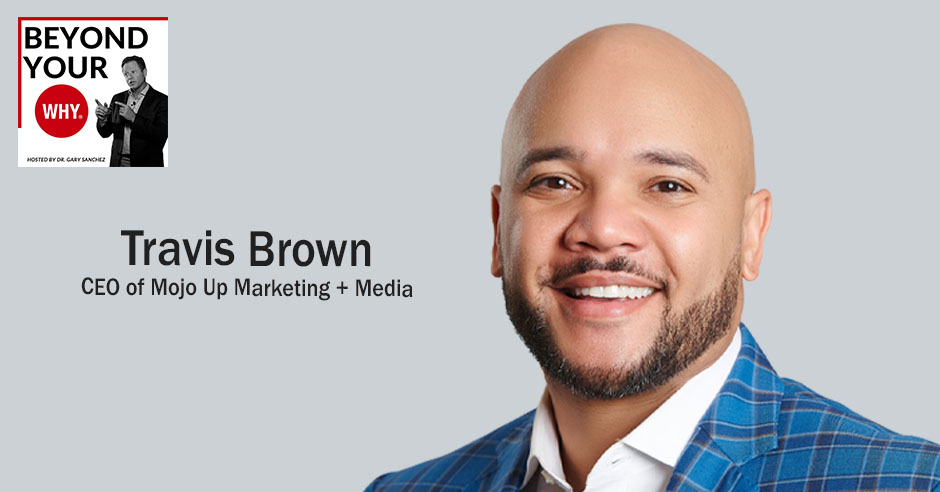
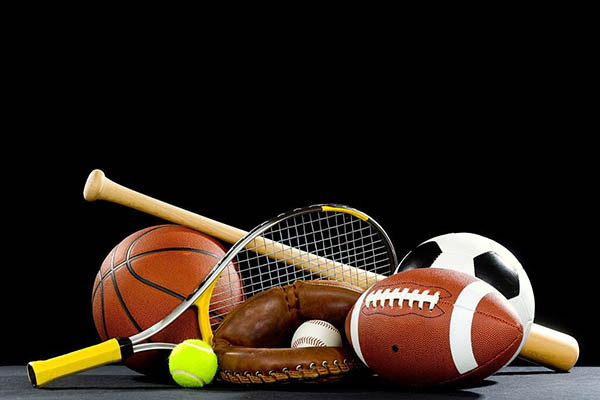
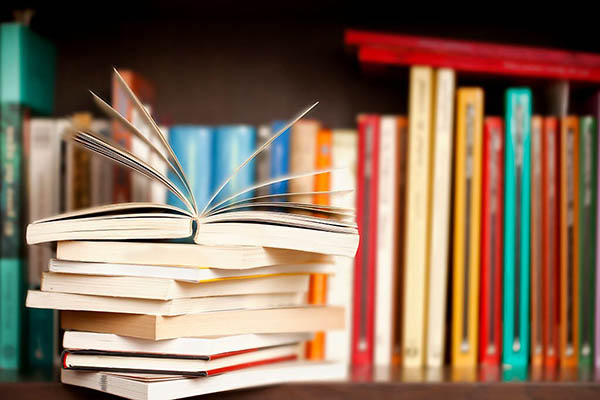



 Travis Brown is the CEO of Mojo Up Marketing + Media. Mojo Up is an MBE certified, black-owned and minority-operated, full service, brand marketing agency that is made up of a diverse and talented team of marketing professionals and creatives. Our focus is to tell the story, shape the brand, and guide the marketing future of our clients as the make their greatest impact by using their greatest asset – their own authenticity.
Travis Brown is the CEO of Mojo Up Marketing + Media. Mojo Up is an MBE certified, black-owned and minority-operated, full service, brand marketing agency that is made up of a diverse and talented team of marketing professionals and creatives. Our focus is to tell the story, shape the brand, and guide the marketing future of our clients as the make their greatest impact by using their greatest asset – their own authenticity.
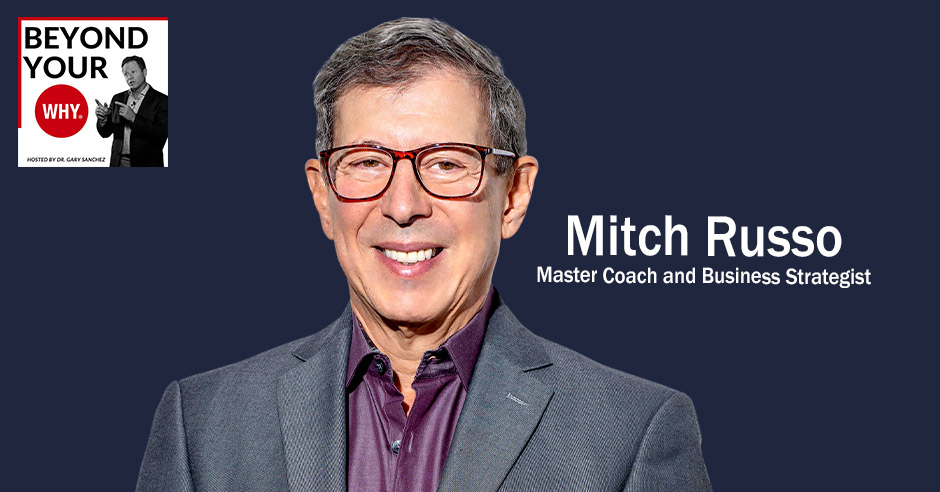
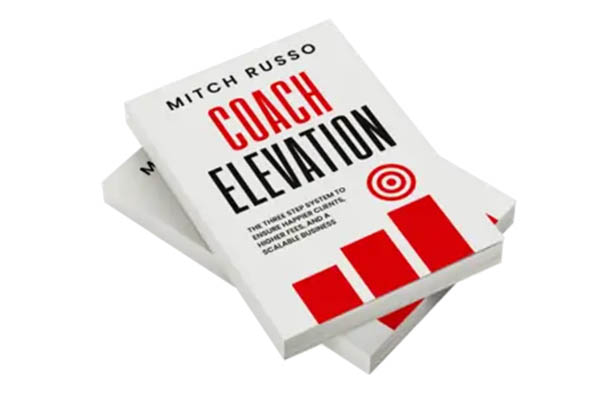
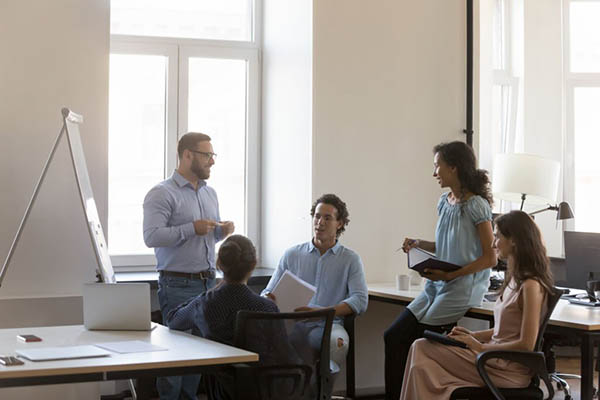


 Mitch Russo started a software company in his garage, sold it for 8 figures and then went on to build a company to over $25M with Tony Robbins and Chet Holmes. Nominated twice for Inc Magazine Entrepreneur of the Year.
Mitch Russo started a software company in his garage, sold it for 8 figures and then went on to build a company to over $25M with Tony Robbins and Chet Holmes. Nominated twice for Inc Magazine Entrepreneur of the Year.